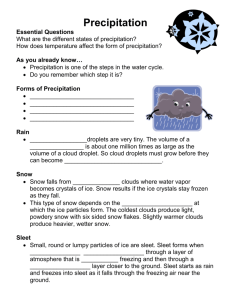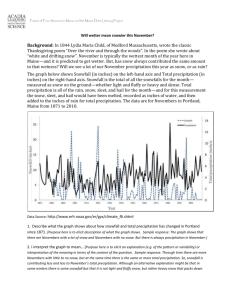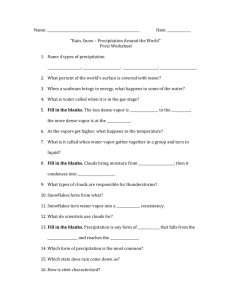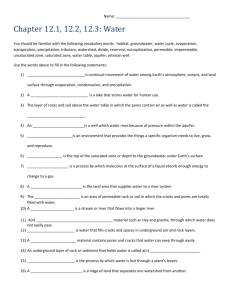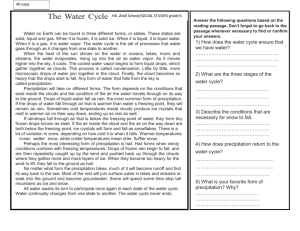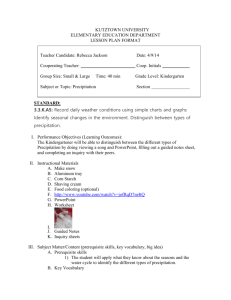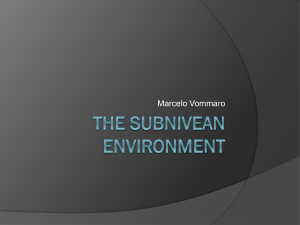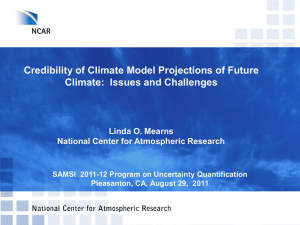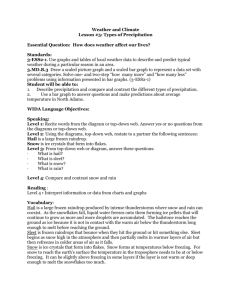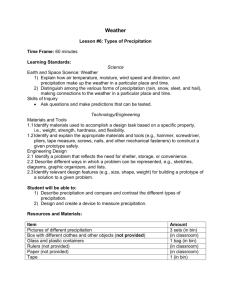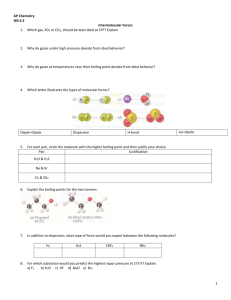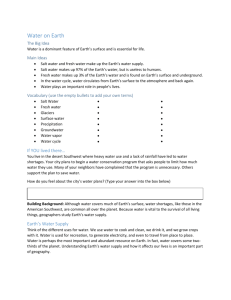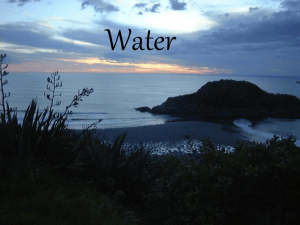Earth: The Water Planet
advertisement
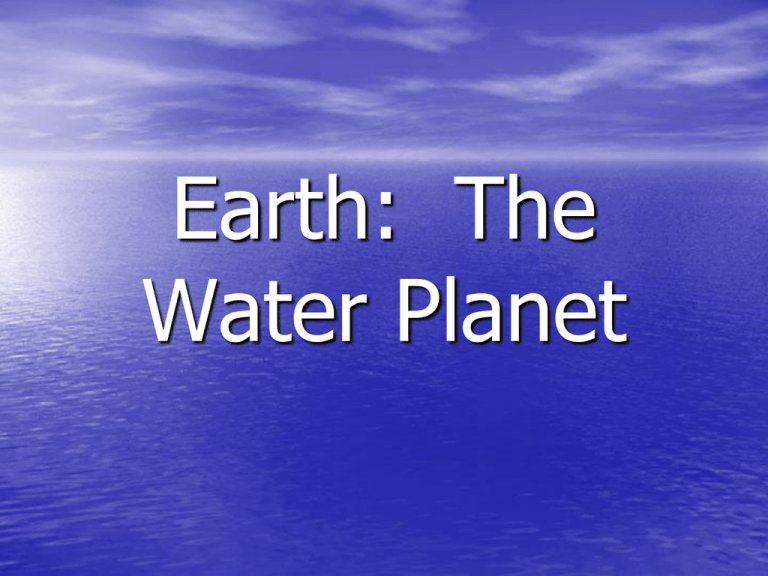
Earth: The Water Planet The Water Cycle Water Cycle Notes • The total amount of water on the Earth remains fairly constant. • The water moves above, across, and through Earth’s crust and ecosystems. The Sun • Heat energy from the sun drives the water cycle. • Heat reaches the Earth by radiation. Evaporation • The process of liquid water changing into water vapor. • Oceans contribute about 80% of all the water vapor in the air. Condensation • The process in which water vapor changes into liquid water as the water vapor rises into the air and cools. • When water vapor condenses on particles in the air and tiny water droplets or ice crystals form, a cloud is visible. Precipitation • Solid or liquid water that falls from the air to • • • Earth Rain, snow, sleet, and hail are forms of precipitation. Form when drops of condensation in clouds come together and grow too large to remain suspended Precipitation always “runs” downward due to gravity All precipitation starts as snow! • Snow falls into warm air and melts = rain • Snow falls into cold air and never melts on the way down=snow • Snow falls, melts, and refreezes as it travels through cold air=sleet • Snow falls, melts, refreezes and becomes the “seed” kept suspended by updrafts until it gets too heavy and falls=hail “Lake Effect” Snow •Cold , dry air blows over large lakes and then over land Where does precipitation go? • Most falls back into the ocean • Some falls on the ground and soaks in • Some falls on the ground and runs off the surface into tributaries (streams and small rivers that feed into a main river) Transpiration • The process by which plants release water vapor into the air through their leaves Groundwater • Water located in the gaps and pores in rocks below earth’s surface. • Water gets there because the soil in places is permeable which means water can easily pass through. • It can collect in large underground lakes called aquifers. • Wells can be dug to access groundwater. Fresh Water • Humans are 60%-75% water. • Plants use water to make their own food. • Both humans (animals) and plants need fresh water. • Fresh water has a very low salt content • Only about 3% of all the water on Earth is fresh water. • Of that 3% over 2% is frozen. Preserving Water Resources • Since groundwater is our richest source of fresh • • water, we must be careful with disposing of chemicals. Water treatment factories can filter and partially purify water. (Boise WaterShed) Wetlands act as natural water filters as some waste settles out, is absorbed by plants, and silt and mud are trapped by plant roots.
